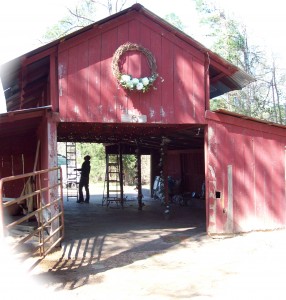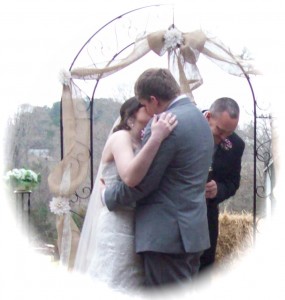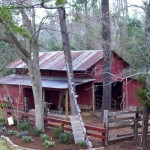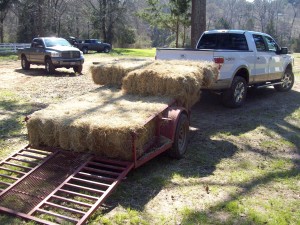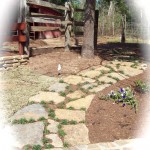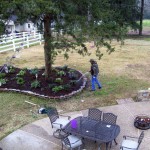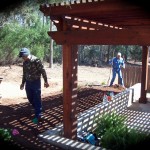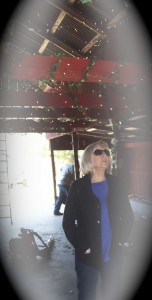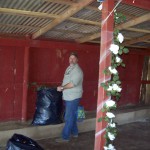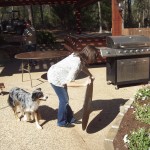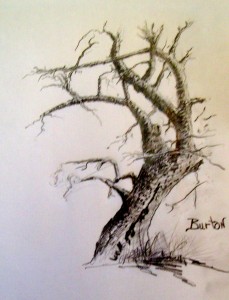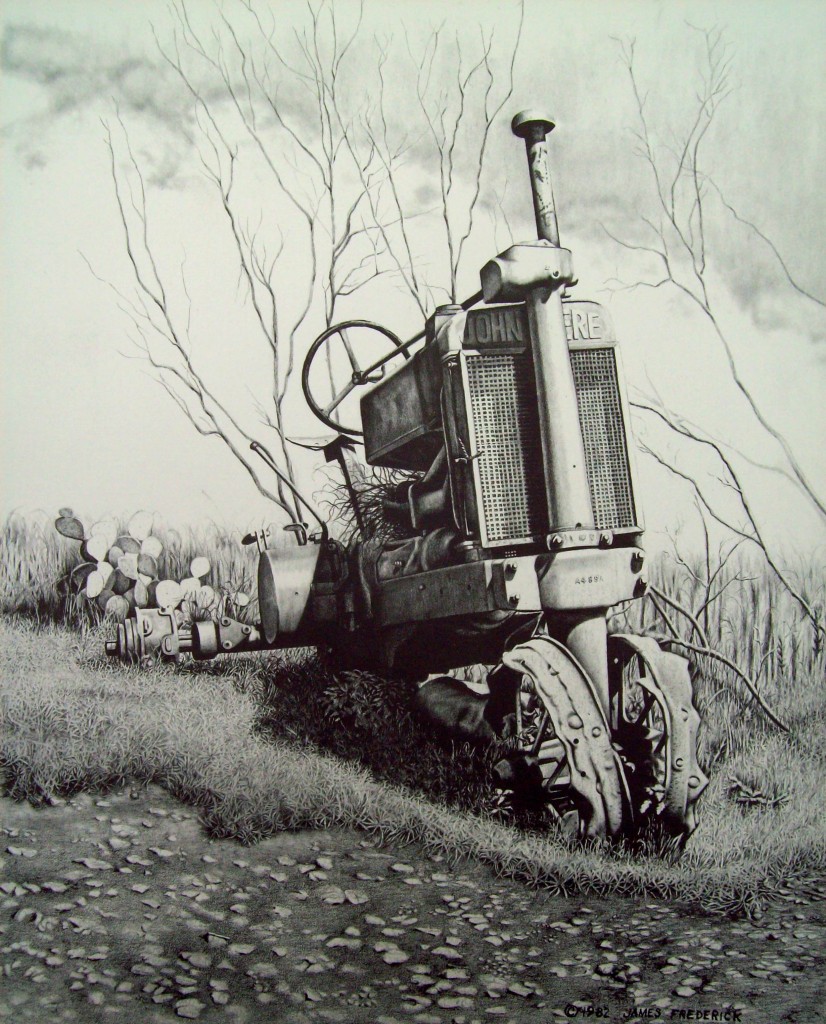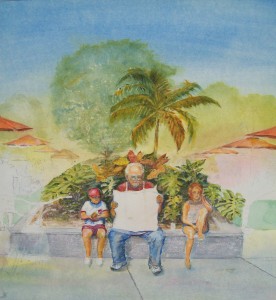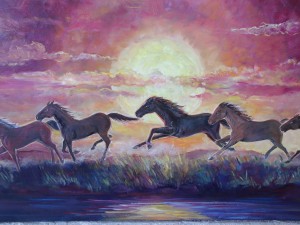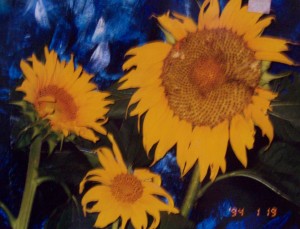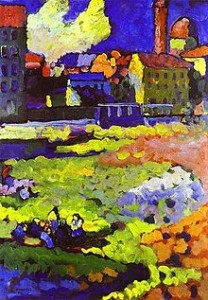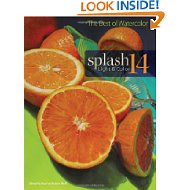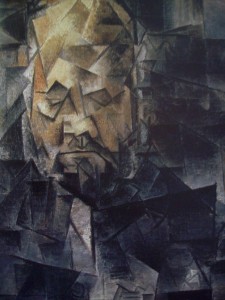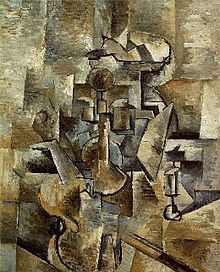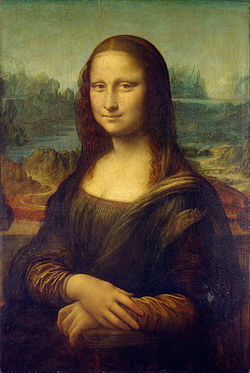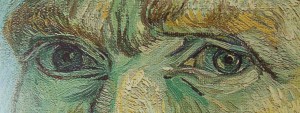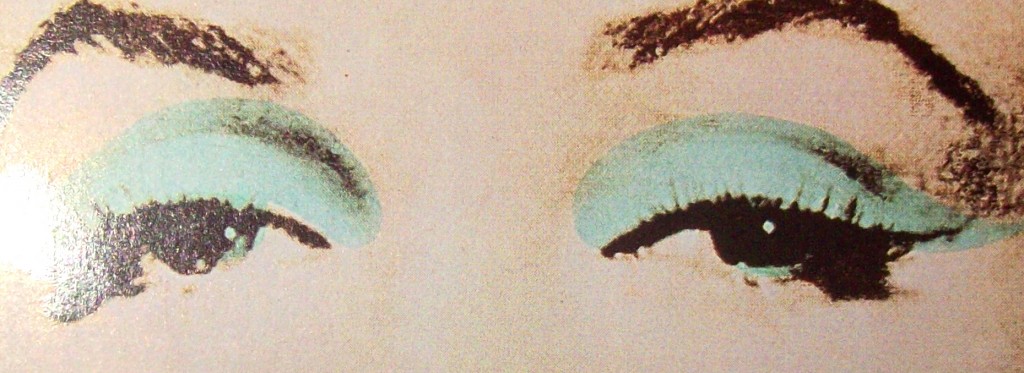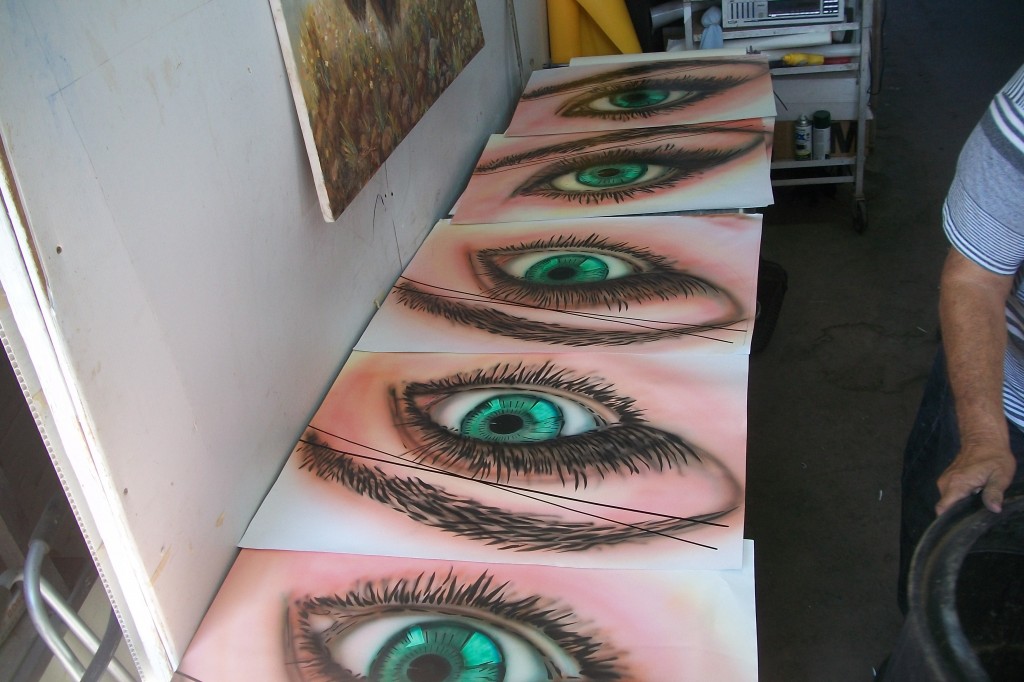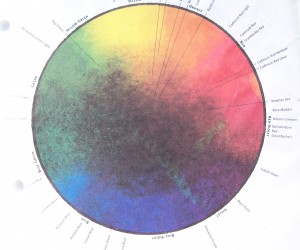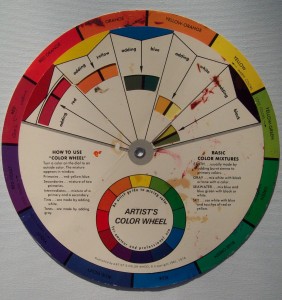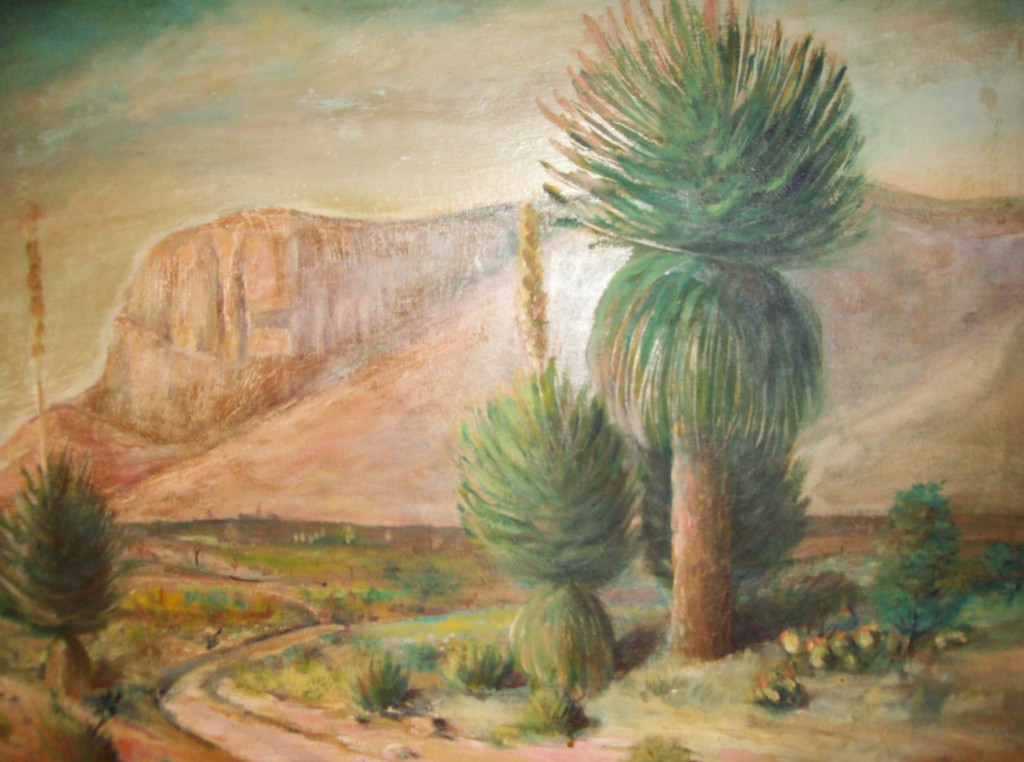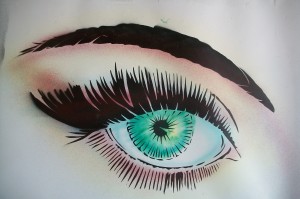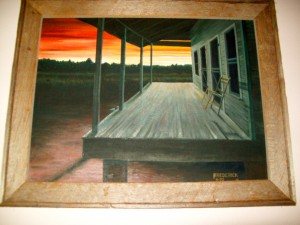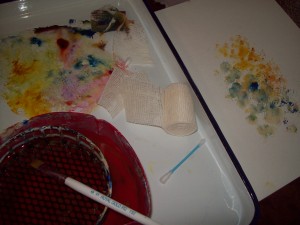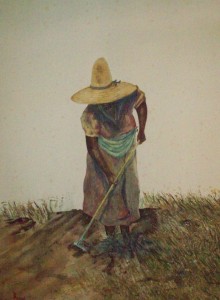
My wife, Nancy, and I zipped down to Texas on March 5th to spend time with my daughter and her husband as they prepared for my Grand-daughter’s wedding which was to be held on their estate in an old red barn three days later. If you haven’t already read the blog post prior to this one, I would advise you to go there first and read it before you read this one. It’ll make more sense.
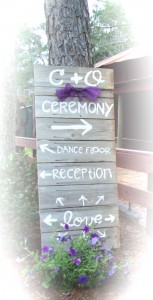
Just outside and to the left of the red barn, and gently placed in a recently new landscaped flower bed, was a locator sign that directed visitors to the different areas of activity on the estate. Olivia made the signage. I felt this was a typical “Burton” thing to do since she came from a family of sign painters (her great-uncle, artist Lynn Burton, and her great grandfather, the late artist Arlen Burton). Me? I couldn’t paint letters for any amount of money.
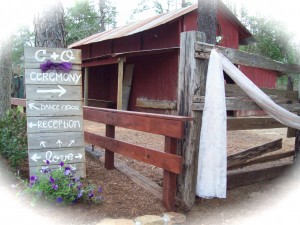
Early in the morning of the wedding day, I walked the area. I couldn’t help but feel anticipation in the well prepared grounds, as if they were speaking to me. On this day two young people would make a commitment of sincerity that would be life changing, and, hopefully, from my point of view and desire, life creating. It was going to be a good day…a day committing to the prolongation of my family line. Yes, indeed! It was going to be a good day.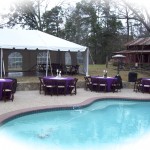
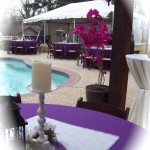
The scene in back of the great house was beginning to appear near ready for the guest reception. The tent was up, the dance floor was in place, candles were placed on tables, and the empty chairs screamed for frivolity.
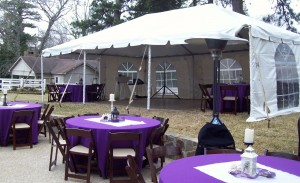
Olivia’s brother #3 was looking over the outside area, making certain all was in order, especially the wine, sparkling grape, and champagne.

So, the outside is shaping up, but what about the inside?
One can not walk inside without being encircled by a threatening order surrounded by a cacophony of disorder. A simple glance at the family room coffee table filled with over a hundred utensils wrapped in a wedding napkins makes my case.

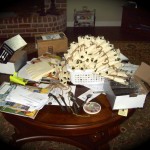
Two grandmothers (one a step, but both named Nancy) patiently assembled the toasting glasses. It had been many years since the two women had the opportunity to see each other, and the reunion was a pleasant one, especially to meet again under such positive conditions.

It was obvious. The inside of the house was mostly controlled by women. Surprisingly, I was able to slip among them without them knowing I was there as I doggedly shutter snapped my camera. One exception was Olivia’s brother #1 who always seems comfortably walking among the many and the great.
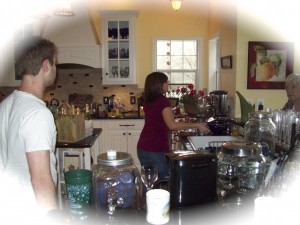
It seemed as if everyone had a part, as if all was a well scripted play. This was the late morning on the day of the wedding. The ceremony was planned to take place promptly at 4:00pm and I wasn’t certain everything would be ready no matter how well scripted.
Outside, there was an overcast of clouds with a 40% chance of afternoon showers predicted. Grandmother Nancy kept saying, “Not to worry…it’ll hit thirty miles South of here…not here at all.” We all hoped she was right, because rain is not what we wanted since the bride and groom were going to be saying their vows outside of the barn on a wooden platform. “Not to worry,” Mother Andrea kept saying. “If we must they can say their vows in the dance tent or the house.” The women seemed so comfortable, controlled and unconcerned. I think they were faking me out, but I did think there was going to be a wedding.
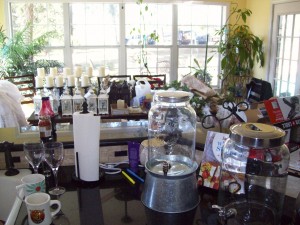
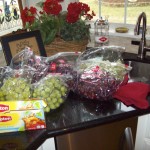
Order persisted to threaten disorder throughout the house, and until each item was placed in their planned space would the disorder persist.
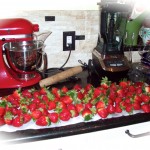
It didn’t matter that everything at this time seemed a little disorganized, the wedding planner wasn’t showing any signs of panic or confusion, so why was I concerned?
If no one else was concerned, then I shouldn’t be. Realizing this, I leisurely moseyed into the family room and snapped a shot of the bride’s other grandfather’s (the late James Frederick) artwork on the wall. While moseying, I decided to mosey upstairs to relax for a couple of hours before getting ready for the wedding.
To be continued: Please keep following, we will get the bride and groom to the preacher. And we’ll have a wedding party. Check back.
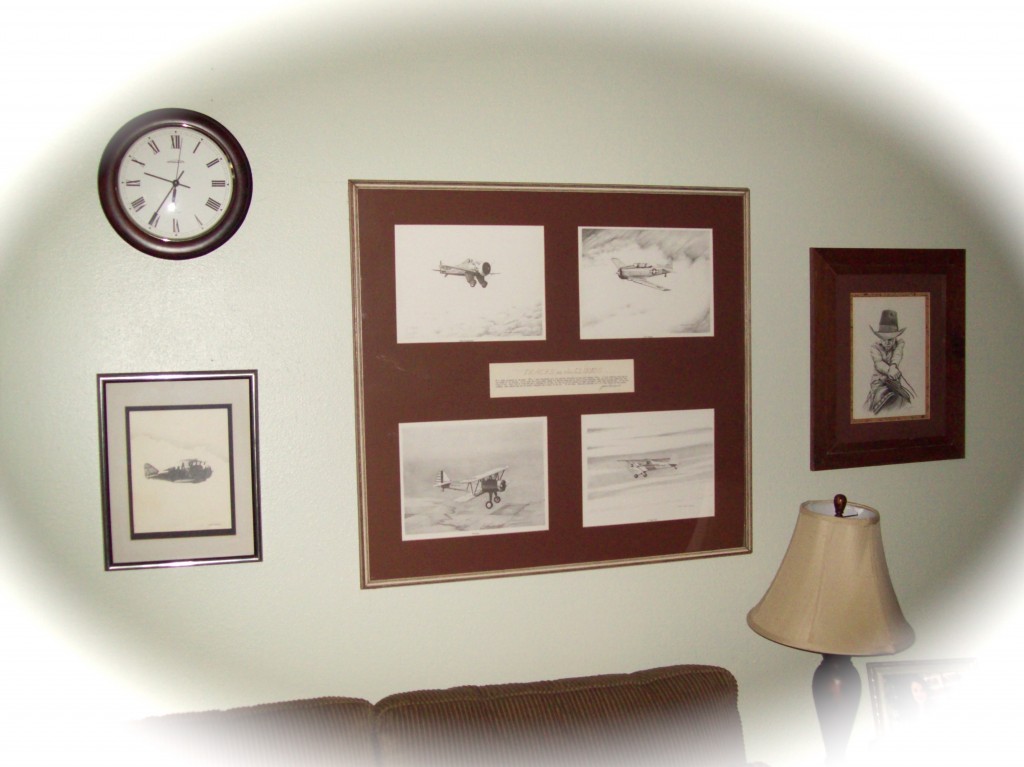
If you would like to see some of my grand-daughter Olivia’s (the bride) artwork, go to the top of page and click on Burton Family Gallery. You will have to scroll down through my work, one of my father’s painting, and then you will be in the talented Olivia area.
If you are over eighteen years old, sign up for the Art Center Information newsletter. There will be one person selected (soon) to receive a beautiful coffee table book. Splash 14.
